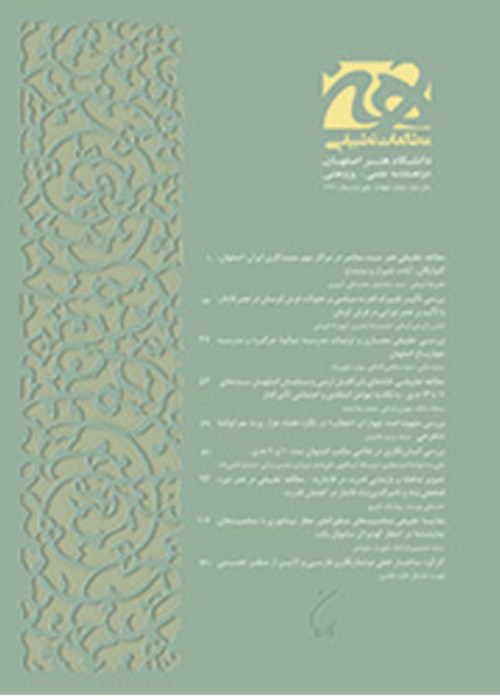Plant Motifs on the Tiles of the Ruined Jahānnāma Pavilion with Other Safavid Palaces
Jahānnāma Pavilion at the beginning of Čahārbāḡ Street is one of the famous palaces of the Safavid period, which, like many other palaces of this period, was completely destroyed during the Qajar era and specifically, the rule of Ẓell-al-Solṭān. With archaeological excavations in the approximate area of the palace in 2014, in addition to determining its exact location, a significant number of seven-color tile pieces with plant motifs were obtained. The present study was carried out with the aim of identifying the plant motifs used on the tiles of the ruined palace of Jahānnāma and finding the similarities and differences between these motifs and the plant motifs of the tiles of the remaining Safavid palaces in Isfahan and identifying their indicator Characters. The research questions are: What kind of plant motifs are mostly used in Jahānnāma Palace tiles? And what similarities or differences these plant motifs have with the plant motifs on the tiles of other Safavid palaces in Isfahan? The information of this research has been done through the method of finding and collecting library documents and texts on the one hand, and on the other hand, field investigation on 141 pieces of remained tiles from Jahānnāma Palace and compare them with the patterns of tiles of other palaces remaining from the Safavid period in Isfahan. So the research method is descriptive-analytical and comparative. The results of the research show that among the plant motifs in the tiles of Jahānnāma Palace, Eslīmī and ḵatāʾī motifs have the highest quantity, respectively, and these motifs, with their vast subsets, show that they are very similar to other motifs found on the tiles of other palaces in Isfahan. In all four researched palaces (ʿĀlīqāpū, Čehelsotūn, Haštbehešt, and Jahānnāma), the greatest similarity can be seen in the combination of Islamic motifs with ḵatāʾī motifs, while in some parts, ḵatāʾī motifs are used individually and only in one of the palaces.
- حق عضویت دریافتی صرف حمایت از نشریات عضو و نگهداری، تکمیل و توسعه مگیران میشود.
- پرداخت حق اشتراک و دانلود مقالات اجازه بازنشر آن در سایر رسانههای چاپی و دیجیتال را به کاربر نمیدهد.


